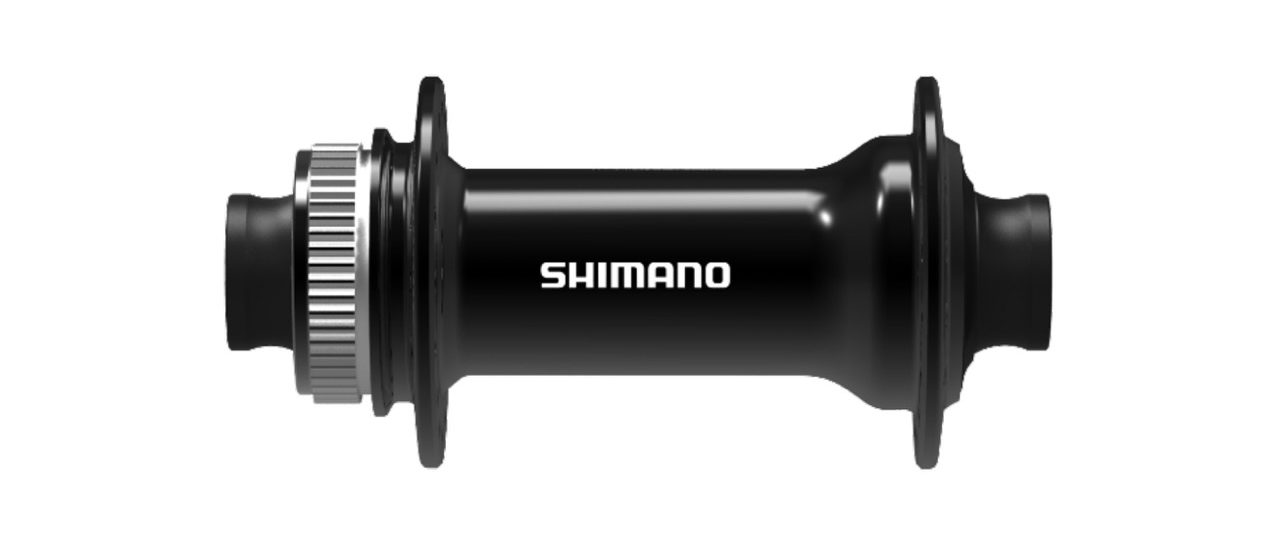This is a pretty big launch day for Shimano, the bicycle component giant not only released its new mid-level product line, CUES … but it’s launching its new mid-level hubs today as well. More than just a new hub, this marks a radical departure for Shimano from its tried-and-true cup and cone bearing system to sealed cartridge bearings.
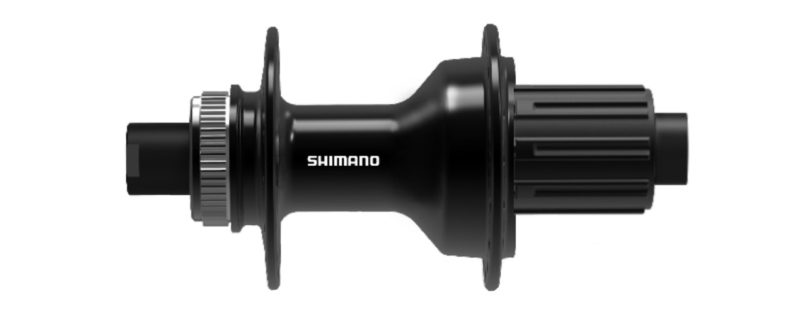
These new hubs mark quite a departure from Shimano’s previous hubs at this level. Shimano says these hubs were designed to be reliable like its earlier offerings, but also much more versatile.
These new mid-range hubs come with modular and removable end caps so you can run either quick-release or thru-axle-type axles. The freehub body on these new hubs is also modular, allowing for easy swapping of an HG cassette body to a Micro Spline cassette body, or vice versa.
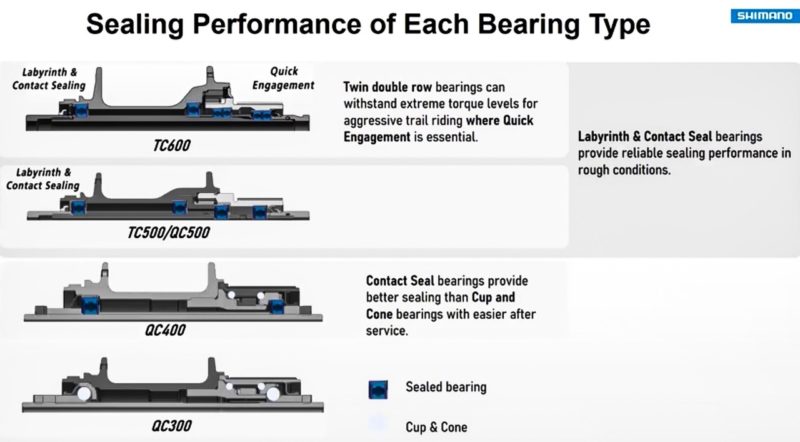
The use of cartridge bearings is also new for this hub line (and Shimano in general). The top-of-the-tier TC600 hub uses as many as six cartridge bearings with four (twin double-row) in the freehub body. The cartridge bearings are also used in conjunction with Shimano’s Labyrinth & Contact seals, providing what Shimano calls a “double-sealed hub” — not just relying on the sealing of the bearings themselves.
The tiers of the new hub line look like this:
- TC600: twin double-row bearings and quick engagement, built for aggressive trail riding and high torque, Labyrinth & Contact seal bearings
- TC500/QC500: Labyrinth & Contact seal bearings
- QC400: Contact seal bearings provide a better seal than traditional cone and cup bearings
- QC300: traditional cone and cup bearings
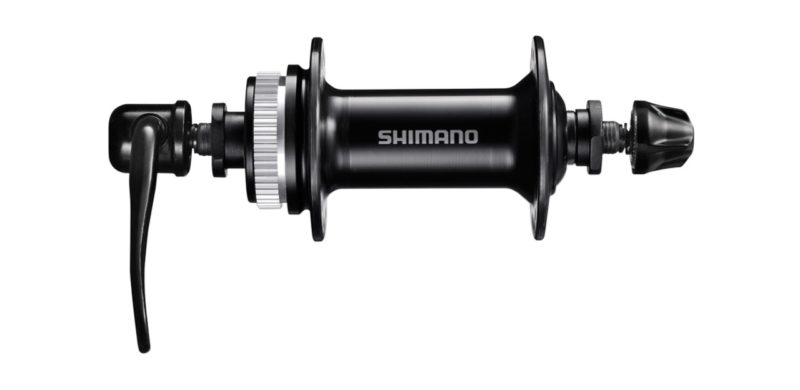
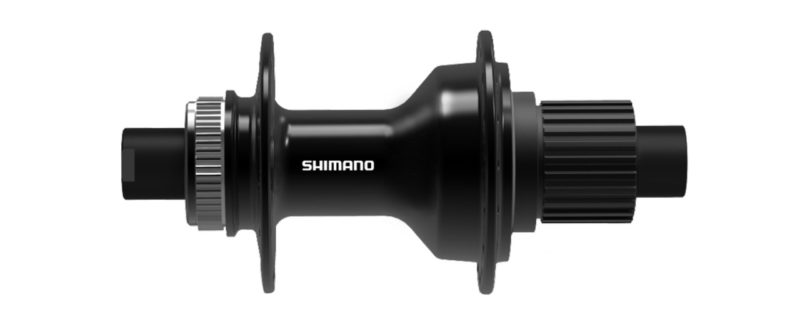
The TC500 and QC500 are also using a mix of cartridges — four actually — with two in the hub body and Labyrinth & Contact seals. The QC400 is utilizing two cartridge bearings on the outside of the freehub body, with Shimano’s Contact seal, while the QC300 is left to use Shimano’s traditional cup and cone bearings.
New Hub Nomenclature
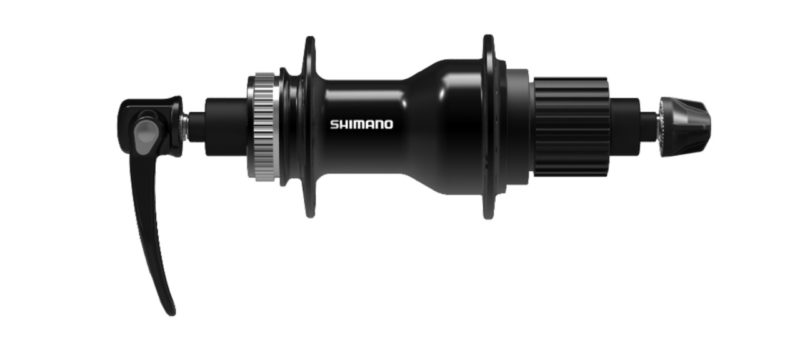
The new line of hubs has a pretty easy way to tell what you’re getting or how to choose the hub you want by looking at the “coding” of the product.
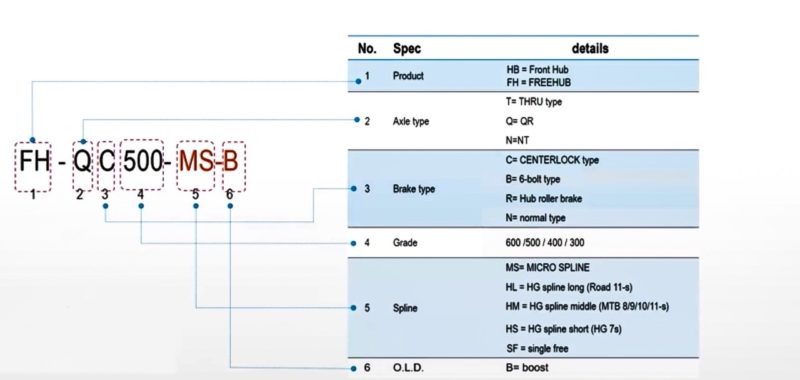
For example, the hub pictured above is the “FH-QC500-MS.” The “FH” at the front is the Free Hub. The next in the sequence is the “Q,” which, in this case, means “quick release axle,” while the next one, “C,” stands for “Center Lock” for the rotor mount. Moving to the “500,” that’s the level of the hub, and the “MS” stands for what the free hub is compatible with; in this case, it’s Micro Spline. And lastly, the “B” stands for the Over Locknut Dimension, more commonly known as O.L.D. — in this case, the spacing is “Boost.” This should match the spacing between your rear dropouts.
One of Shimano’s goals when developing this line of hubs was to simplify the serviceability of its hubs, in turn giving the bike shops what they’ve been asking for.
Check out more details by hitting the link below.
